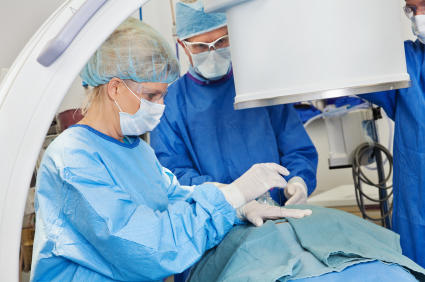About the Study
The Rad Tech Study began in 1982 by identifying 146,022 current and former radiologic technologists who were certified by the American Registry of Radiologic Technologists (ARRT) for at least two years from 1926 through 1982. The study cohort includes technologists certified in radiography, nuclear medicine, radiation therapy, and other imaging specialties. More than 110,000 radiologic technologists — current and former — have completed one or more questionnaires about their work history, health status, and other factors. Through their participation, we are learning more each year about radiation and health.
The objectives of the study are to assess risks for cancer and other diseases from
- Long-term low-dose occupational and personal medical ionizing radiation exposures
- Occupational exposures among technologists who perform nuclear medicine and fluoroscopically guided diagnostic interventional procedures
- Solar ultraviolet radiation exposures (for skin and other cancers)
The key goal is to understand how repeated low-dose occupational ionizing radiation exposures, such as those potentially experienced by radiologic technologists, are related to cancer and other health conditions.
A Unique Resource
The Rad Tech Study is unique because:
- It is the largest and most comprehensive study of people exposed to radiation in medical jobs and includes individualized organ and tissue dosimetry based on dosimeter records and self-reported work history.
- Participants come from all U.S. states and territories. Widely varying solar UV exposures affords a rare opportunity to assess risks for melanoma, non-melanoma skin cancer, and other cancers that may be associated with ultraviolet radiation.
- The large proportion of women (73%) in the cohort enables studies of radiation-related cancer risks for the two most radiosensitive organs, breast, and thyroid. The availability of biospecimens allows for identifying and replicating genetic determinants of breast and thyroid cancers and interactions between occupational radiation exposure and genetic factors.
This cohort is suited to address gaps in our scientific understanding of radiation risks according to dose-rate of exposure, that is, whether disease risks are similar for comparable cumulative radiation doses from a single or a few high-dose exposures (e.g. atomic bomb, radiotherapy) or from many small doses received over a protracted period that may be mitigated by DNA repair or other mechanisms (e.g. occupational exposures).
The study conducted four major surveys during 1983-2014 with follow-up questionnaires to those who reported working with radioisotope or fluoroscopically-guided procedures.
Select Study Results
The Rad Tech Study has yielded important findings related to health risks from repeated exposure to relatively low doses of ionizing radiation, including positive associations between cumulative lifetime radiation exposure and risks of female breast cancer, lung cancer, and cataracts.
The cohort has also been a valuable resource for investigating the effects of ultraviolet light exposure and other lifestyle factors on cancer and other health outcomes, including the growing prevalence of obesity and the nature of the relationship between body mass index and all-cause mortality. In addition, investigators are studying the risk of cancer associated with physical activity, alcohol consumption, and smoking.
Data from the USRT is being pooled with other epidemiologic studies to replicate common genetic variants associated with breast cancer from genome-wide association studies.
See the complete list of publications from the Rad Tech Study (NCBI Collection).
Survey Questionnaires
|
First Survey 1983 - 1989 |
|
|
Second Survey 1994 - 1998 |
|
|
Third Survey 2003 - 2005 |
|
|
Fourth Survey 2012 - 2014 |
|
|
Fluoroscopically-Guided Procedures Questionnaire 2013 |
|
Contact Us
For more information, contact Dr. Cari Kitahara.
If you wish to contact the University of Minnesota Research staff, call 612-626-0900 or e-mail.
U.S. Radiologic Technologists Study
University of Minnesota MMC 807
420 Delaware Street S.E., Suite 1260
Minneapolis, MN 55455
